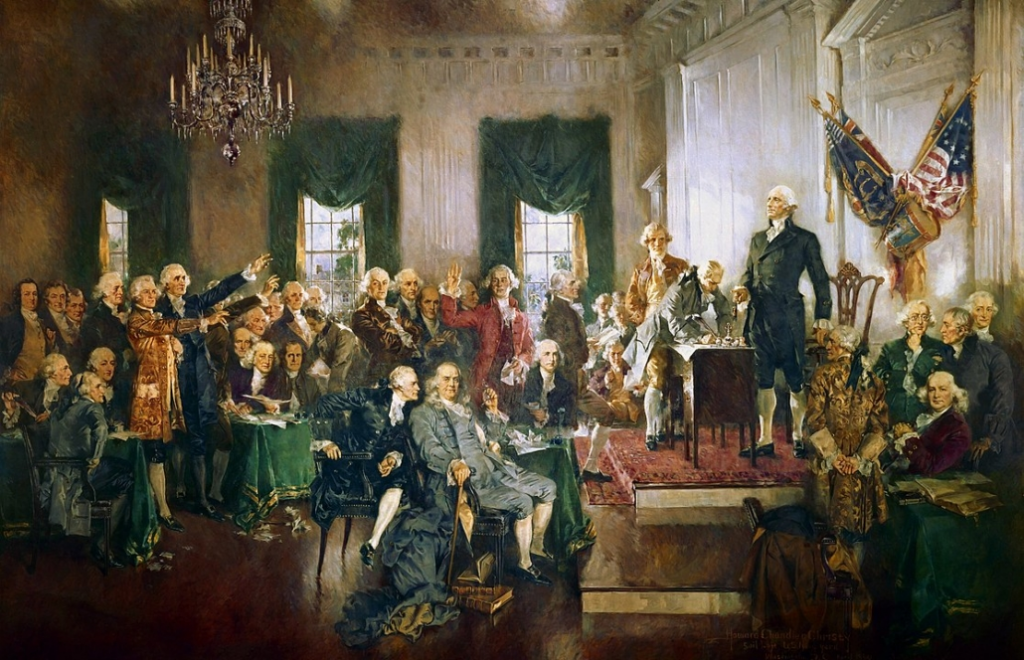In 1787, the United States Constitution gave birth to the world’s first modern federal republic—a nation so improbable that even its founding fathers weren’t sure what they had created. Benjamin Franklin called it a “pure virgin,” James Madison saw it as a “necessary compromise,” and Alexander Hamilton envisioned an “empire in the making.” But what did George Washington, the man chosen to lead this fledgling nation, think? Well, if you asked him, he felt more like a prisoner walking to the gallows than a triumphant leader stepping onto history’s stage.

A Reluctant Hero
Washington never wanted to be president. After leading the American Revolution to victory, he was ready to retire to his plantation at Mount Vernon. He had won the war; why risk tarnishing his legacy by wading into the uncharted waters of American politics? But the country was in chaos. The Articles of Confederation had proven weak, and the young nation teetered on the edge of collapse. Madison and Hamilton practically begged Washington to step in. “You must lend yourself to your country,” Hamilton insisted. Without him, the whole republican experiment might fail.
So, despite his deep reservations, Washington agreed. His “campaign” was the easiest in history—he didn’t have to do anything. As long as he didn’t say “I refuse,” he was the inevitable choice. On February 4, 1789, all 69 electors cast their votes for Washington, making him the first and only U.S. president to be unanimously elected.
The Journey to New York
His trip to the nation’s temporary capital, New York City, was nothing short of a royal procession. Traveling from Mount Vernon took him eight days—not because of distance, but because every town along the way turned his journey into a festival. Streets were flooded with cheering crowds, church bells rang, cannons fired, and flowers were strewn along his path. In Trenton, New Jersey, thirteen young girls in white dresses greeted him with petals, honoring his past victory against the Hessians there during the Revolution. It was a moving moment, one that brought tears to his eyes.
But Washington felt the weight of these celebrations. “The higher their expectations, the greater their disappointment will be,” he worried. Unlike a king, who inherited power, he had to earn the people’s trust and define the very role of a president.
The First Inauguration
On April 30, 1789, Washington stood on the balcony of Federal Hall on Wall Street, facing a sea of expectant faces. He placed his hand on a Bible, recited the oath of office, and—according to legend—added, “So help me God.” The crowd erupted in cheers. The French minister watching the ceremony noted, “Never have I seen a government and its people so united in trust.”
After the swearing-in, Washington gave the first inaugural address. Originally, he had written a sprawling 73-page speech, filled with self-justifications and philosophical musings. Thankfully, James Madison convinced him to cut it down to a more digestible 1,400 words. Even so, Washington was so nervous delivering it that he fumbled his words and clutched the podium with shaking hands.
A Legacy That Endures
Despite his self-doubt, Washington went on to shape the presidency as we know it. He set the precedent for a peaceful transfer of power, established the first Cabinet, and ensured the survival of the new republic. His decision to step down after two terms cemented the idea that the presidency was not a lifetime appointment—a radical departure from the monarchies of Europe.
Today, America is far different from the nation Washington led, but his influence still looms large. Every president since has followed in his footsteps, swearing the same oath, often placing their hand on a Bible, and sometimes even whispering, “So help me God.”
From a reluctant leader to a national icon, Washington’s legacy is a testament to the power of duty over desire. He may not have wanted the job, but in taking it, he helped create a country that has thrived for over two centuries.
The Myth of the Wooden Teeth
One of the most enduring myths about Washington is that he had wooden teeth. While his dentures were indeed uncomfortable and unsightly, they were not made of wood. Instead, they were crafted from a mix of human teeth, animal bone, and ivory. His dental issues were a source of lifelong discomfort, and he often appeared stiff or reserved in portraits—perhaps in part because he was always in pain.

No comments yet.